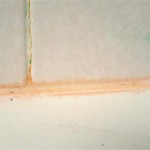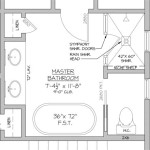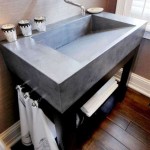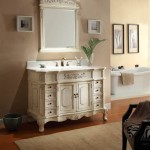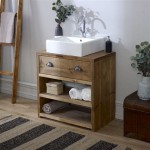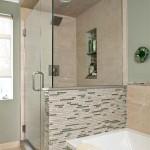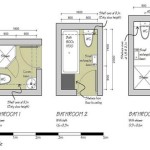Easy Install Bathroom Fan With Light: A Comprehensive Guide
Bathroom ventilation is a crucial aspect of maintaining a healthy and comfortable home environment. Excess moisture from showers and baths can lead to mold growth, unpleasant odors, and damage to building materials. A bathroom fan with a light fixture provides two essential functions in one unit: ventilation to remove moisture and illumination for visibility. Furthermore, many modern models are designed for easy installation, making them accessible to homeowners with basic DIY skills.
This article provides a comprehensive guide to understanding and installing an easy-install bathroom fan with light. It covers key pre-installation considerations, detailed step-by-step installation instructions, and essential post-installation checks, ensuring a successful and safe upgrade to your bathroom.
Key Pre-Installation Considerations
Before embarking on the installation process, several critical factors must be taken into account. These considerations will help ensure that you select the appropriate fan, prepare the workspace adequately, and adhere to safety protocols.
Sizing and Ventilation Needs: The primary function of a bathroom fan is to remove moist air effectively. Fan capacity is measured in cubic feet per minute (CFM), and the required CFM for a bathroom depends on its size. A general rule of thumb is to calculate 1 CFM per square foot of bathroom area. For example, a 50-square-foot bathroom would require a fan with at least 50 CFM. Bathrooms with higher ceilings may require a more powerful fan. Online CFM calculators or consultation with an HVAC professional can provide more precise estimations.
Beyond the square footage, consider the number of fixtures in the bathroom. Toilets, showers, and bathtubs all contribute to moisture levels. If the bathroom contains a jetted tub or a large shower, selecting a fan with a higher CFM rating is advisable to ensure adequate ventilation. Overestimating the CFM is generally preferable to underestimating it, as a more powerful fan will evacuate moisture more quickly, reducing the likelihood of mold and mildew growth.
Fan Noise Level (Sones): Bathroom fans produce noise during operation, and the noise level is measured in sones. A lower sone rating indicates a quieter fan. Consider the proximity of the bathroom to bedrooms or living areas when selecting a fan. For bathrooms located near quiet areas, a fan with a sone rating of 1.5 or lower is recommended. For bathrooms in more isolated locations, a slightly higher sone rating may be acceptable. Many manufacturers provide sone ratings on product packaging and in product specifications.
Wiring and Electrical Considerations: Installing a bathroom fan involves working with electricity, so safety is paramount. Before starting any electrical work, turn off the power to the bathroom circuit at the circuit breaker. Verify that the power is off using a non-contact voltage tester. Ensure that the existing wiring is adequate for the new fan. Most bathroom fans require a 120-volt circuit. Inspect the wiring for any damage or deterioration. If the wiring is old or damaged, consult a qualified electrician to replace it. The fan should be wired according to local electrical codes and the manufacturer's instructions. If you are uncomfortable working with electricity, it is best to hire a licensed electrician to handle the wiring connections.
Existing Fan Removal (if applicable): If you are replacing an existing fan, carefully remove the old unit. Disconnect the electrical wiring after ensuring the power is off. Check the mounting hardware and determine if it is compatible with the new fan. If the existing mounting hardware is damaged or incompatible, you may need to install new mounting brackets or straps. Be mindful of the debris and dust that may accumulate during the removal process. Wear safety glasses and a dust mask to protect yourself from these hazards.
Ventilation Ducting: The bathroom fan exhaust must be vented to the outside to effectively remove moist air. Ensure that the existing ductwork is in good condition and properly connected to the outside vent. Ideally, the ductwork should be insulated to prevent condensation. If the existing ductwork is damaged, replace it with new ducting. The ducting should have a smooth interior to minimize airflow resistance. Avoid using flexible ducting with sharp bends, as this can significantly reduce the fan's effectiveness. Confirm that the outside vent is clear of obstructions such as bird nests or debris.
Tools and Materials: Gather all the necessary tools and materials before starting the installation. This will help streamline the process and prevent delays. Essential tools include a screwdriver set (Phillips and flathead), wire strippers, wire connectors, a drill with various drill bits, a non-contact voltage tester, safety glasses, a dust mask, a ladder, and measuring tape. Additional materials may include duct tape or foil tape, screws, drywall screws, and mounting brackets (if needed). Having all the necessary tools and materials readily available will contribute to a smoother and more efficient installation.
Step-by-Step Installation Guide
This section provides a detailed, step-by-step guide to installing an easy-install bathroom fan with light. It assumes that the pre-installation considerations have been addressed and that the necessary tools and materials are on hand. Always refer to the manufacturer's instructions for specific guidance on your particular model.
Step 1: Safety First – Disconnect the Power: Before beginning any electrical work, turn off the power to the bathroom circuit at the circuit breaker panel. Verify that the power is off using a non-contact voltage tester. Test the wires where you will be working to ensure no electricity is present. This is a critical safety precaution that must not be skipped.
Step 2: Remove the Existing Fan (if applicable): If replacing an existing fan, carefully remove the old unit. Unscrew the cover and disconnect the electrical wiring, using wire connectors to cap the wires if necessary. Detach the fan housing from the ceiling by removing the screws or clips holding it in place. Lower the fan carefully and disconnect the ductwork. Dispose of the old fan according to local regulations.
Step 3: Prepare the Opening: Ensure the opening in the ceiling is the correct size for the new fan housing. If the opening is too small, enlarge it using a drywall saw or utility knife. If the opening is too large, you may need to add shims or drywall to create a secure fit for the new fan housing. Clean the area around the opening to remove any dust or debris.
Step 4: Install the Mounting Brackets: Most easy-install bathroom fans come with pre-installed mounting brackets or adjustable mounting straps. Extend the mounting brackets or straps to the desired length and secure them to the ceiling joists or supports. Ensure that the mounting brackets are level and properly aligned to support the fan housing. Use screws or nails to attach the mounting brackets securely to the ceiling joists.
Step 5: Connect the Ductwork: Attach the ductwork to the fan housing using duct tape or foil tape. Ensure that the connection is airtight to prevent air leakage. Secure the ductwork with clamps or screws if necessary. Make sure that the ductwork is properly supported and does not sag or kink. Incorrectly installed ductwork can significantly reduce the fan's efficiency.
Step 6: Wire the Fan: Carefully connect the electrical wiring to the fan according to the manufacturer's instructions. Typically, there will be three wires: black (hot), white (neutral), and green (ground). Use wire connectors to connect the corresponding wires from the fan to the wires in the ceiling. Ensure that the connections are secure and that no bare wires are exposed. Properly ground the fan to prevent electrical shock.
Step 7: Install the Fan Housing: Carefully lift the fan housing into the opening and align it with the mounting brackets. Slide the fan housing into place and secure it to the mounting brackets using screws or clips. Ensure that the fan housing is level and securely attached to the ceiling. The fan housing should fit snugly into the opening without any gaps or movement.
Step 8: Install the Light Bulb and Cover: Install the light bulb or LED module according to the manufacturer's instructions. Snap the cover into place, ensuring that it is securely attached to the fan housing. The cover should fit flush against the ceiling without any gaps.
Step 9: Restore Power and Test: Turn the power back on at the circuit breaker panel. Test the fan and light to ensure that they are working properly. Verify that the fan is exhausting air effectively and that the light is providing adequate illumination. Listen for any unusual noises or vibrations. If the fan or light is not working correctly, turn off the power and recheck the wiring connections.
Post-Installation Checks and Maintenance
After completing the installation, several post-installation checks and maintenance tasks are necessary to ensure optimal performance and longevity of the bathroom fan with light.
Airflow Verification: Verify that the fan is exhausting air effectively to the outside. You can use a piece of tissue paper to test the airflow. Hold the tissue paper near the fan while it is running. The tissue paper should be drawn towards the fan, indicating that air is being exhausted. If the airflow is weak or nonexistent, check the ductwork for obstructions or leaks. Ensure that the outside vent is clear of debris and that the ductwork is properly connected.
Noise Level Assessment: Assess the noise level of the fan. If the fan is excessively noisy, check the fan blades for any obstructions or damage. Ensure that the fan housing is securely mounted and that there are no loose screws or components. Lubricate the fan motor if necessary. If the noise persists, consult the manufacturer or a qualified technician.
Routine Cleaning: Regularly clean the fan cover and housing to remove dust and debris. Use a soft cloth or brush to clean the cover. You can also use a vacuum cleaner with a brush attachment to remove dust from the fan blades and motor. Clean the fan at least once a year, or more frequently if necessary. Regular cleaning will help maintain the fan's performance and prevent the buildup of dust and allergens.
Ductwork Inspection: Periodically inspect the ductwork for any damage or leaks. Repair any leaks with duct tape or foil tape. Ensure that the ductwork is properly supported and that there are no sagging or kinks. Replace any damaged ductwork. Proper maintenance of the ductwork is essential for ensuring efficient ventilation.
Light Bulb Replacement: Replace the light bulb or LED module when it burns out. Use the correct type and wattage of bulb or LED module as specified by the manufacturer. Do not use a bulb or LED module with a higher wattage than recommended, as this could damage the fan or create a fire hazard.
By following these post-installation checks and maintenance procedures, you can ensure that your easy-install bathroom fan with light continues to provide effective ventilation and illumination for years to come, contributing to a healthier and more comfortable bathroom environment.

How To Replace Or Install An Easy Bath Fan The Home Depot

How To Install A Bathroom Fan Step By Guide Bob Vila

Revent 110 Cfm Ceiling Wall Easy Roomside Installation Bathroom Bath Exhaust Fan With Adjustable Led Lighting Humidity Sensing Rvlh110 The Home Depot

Broan Nutone Easy To Install 80 Cfm Bathroom Exhaust Fan With Led Clean Cover Energy Star Aern80lk The Home Depot

Bookingritzcarlton Info Bathroom Fan Light Exhaust

How To Install A Bathroom Fan Step By Guide Bob Vila

Broan Nutone 80 Cfm Ceiling Bathroom Exhaust Fan With Light Hb80rl The Home Depot

Revent 110 Cfm Easy Installation Bathroom Exhaust Fan With Led Lighting Rvl110 D The Home Depot

Hb80rl By Broan Easy Install Ceiling Exhaust Fan Grille Cover With Led Light Single Unit The Appliance Plug

How To Replace Or Install An Easy Bath Fan The Home Depot
Related Posts

